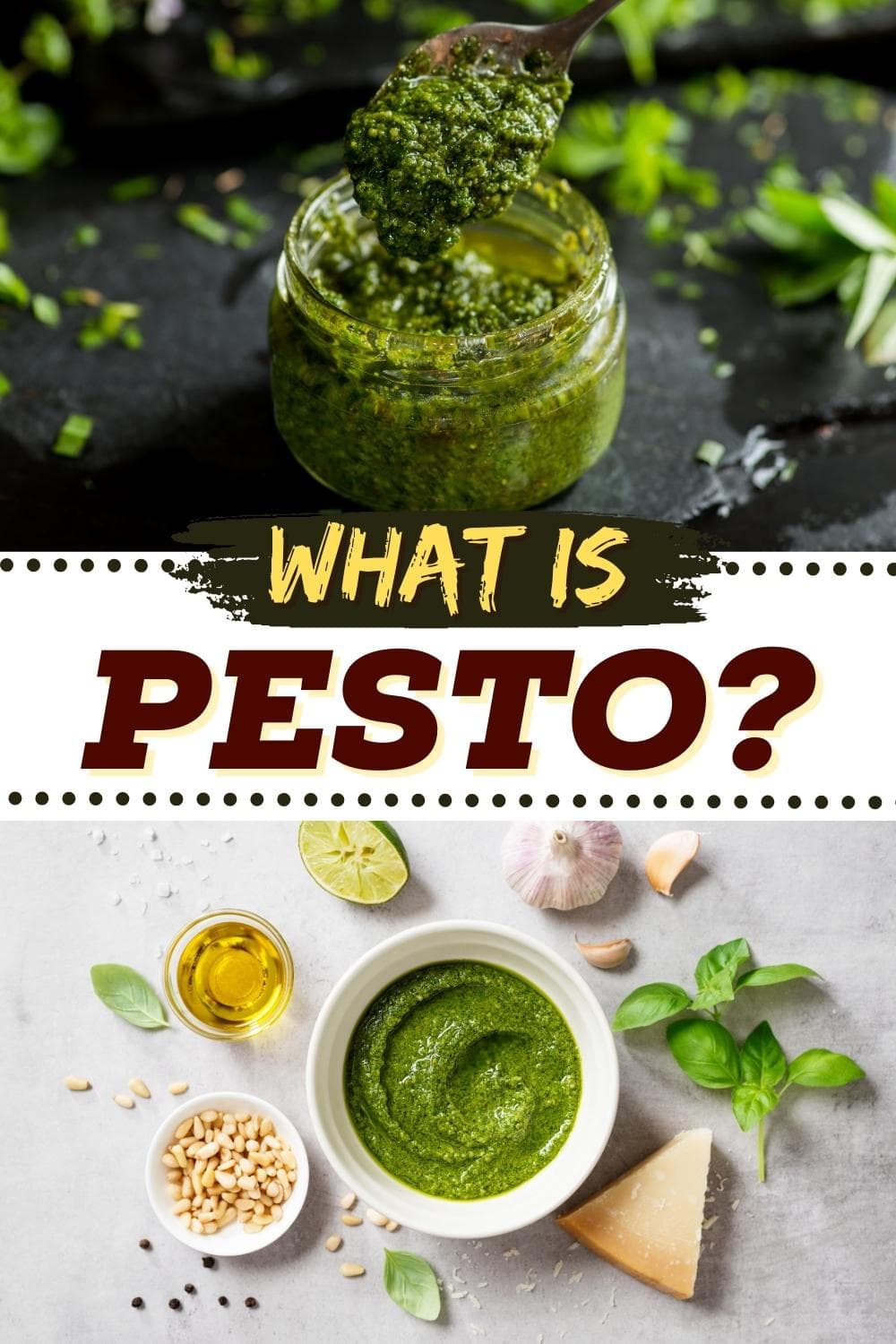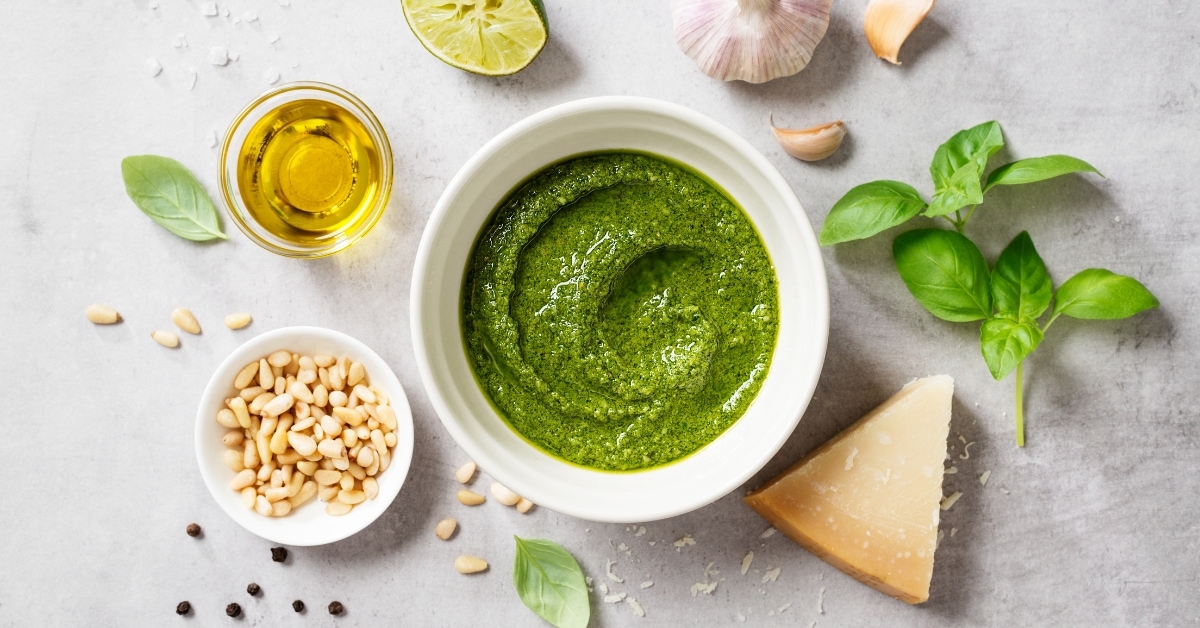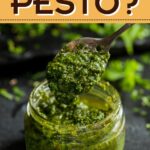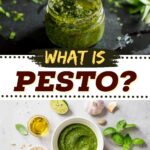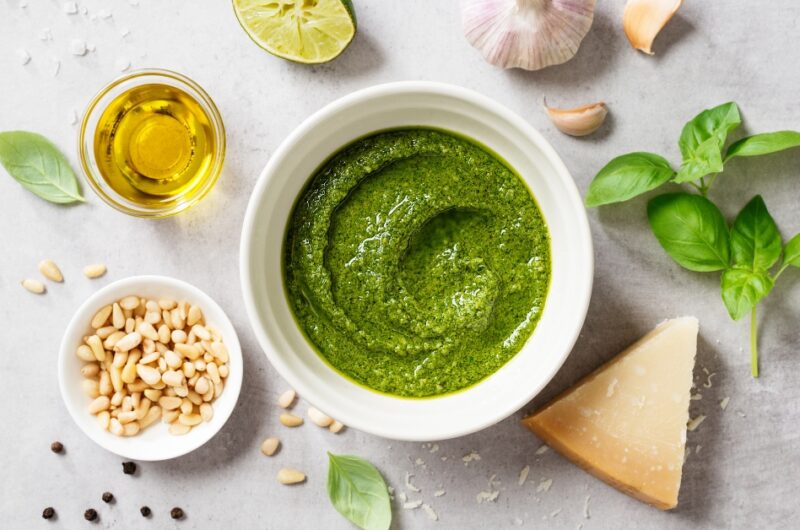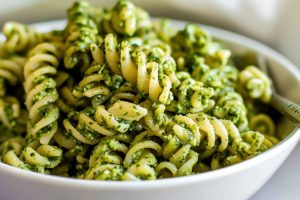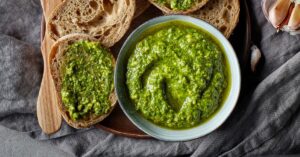It’s bright green, herbaceous, and super tasty, but what is pesto?
This sauce with nuts, basil, Parmesan, and garlic is a lot easier than you think to make at home.
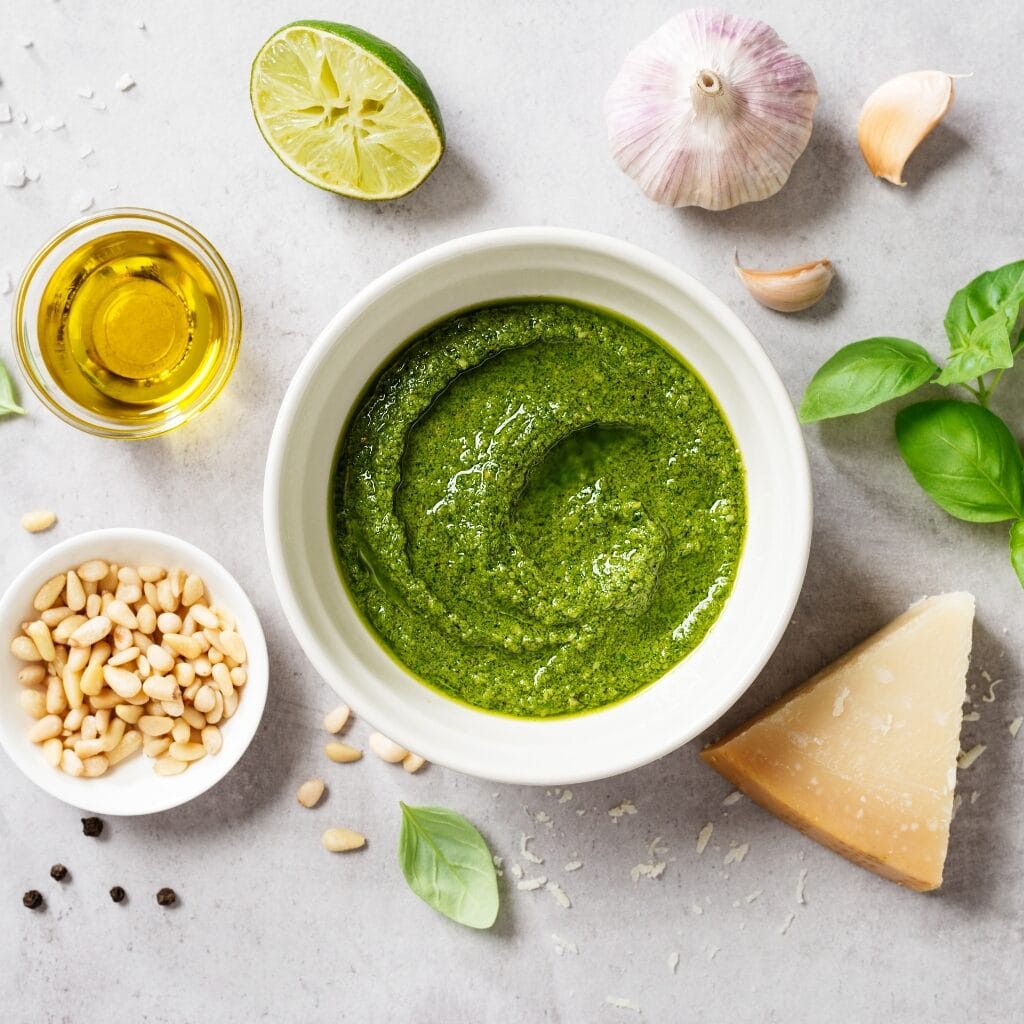
Whether you slather it on pasta or smear it in a sandwich, pesto is a bright and fresh way to jazz up a meal.
And while you can easily buy it from the store, making your own couldn’t be more straightforward.
So let’s take a closer look at this Italian staple, including what goes into it and the different types.
What Is Pesto?
Pesto is an uncooked sauce from Genoa, Italy, with garlic and fresh basil.
Today, it’s often made in a food processor, blending nuts, cheese, salt, and herbs with oil until a thick, somewhat chunky paste forms.
It can be added to recipes and cooked, used as a dipping sauce or spread, or even made into salad dressing.
The most common type, pesto alla Genovese, features garlic, pine nuts, fresh basil, salt, and Parmigiano-Reggiano or Pecorino Sardo blended with olive oil.
Taken from the Italian word for “pounded” or “to crush”, it was traditionally made with a pestle and mortar.
It’s like the superhero of condiments and can totally transform a dish with just one spoonful.
And while classic recipes call for pine nuts and basil, you can easily make it your own with different nuts and herbs.
Pesto Variations
There are different types of pesto out there, from the traditional to the more modern.
We’ll go over some classics below, but here are a few variations on the OG recipe:
- Kale
- Spinach
- Thai Basil
- Red Pepper
- Cilantro Jalapeño
- Avocado
- Beet
- Mint
- Arugula
- Parsley
- Artichoke
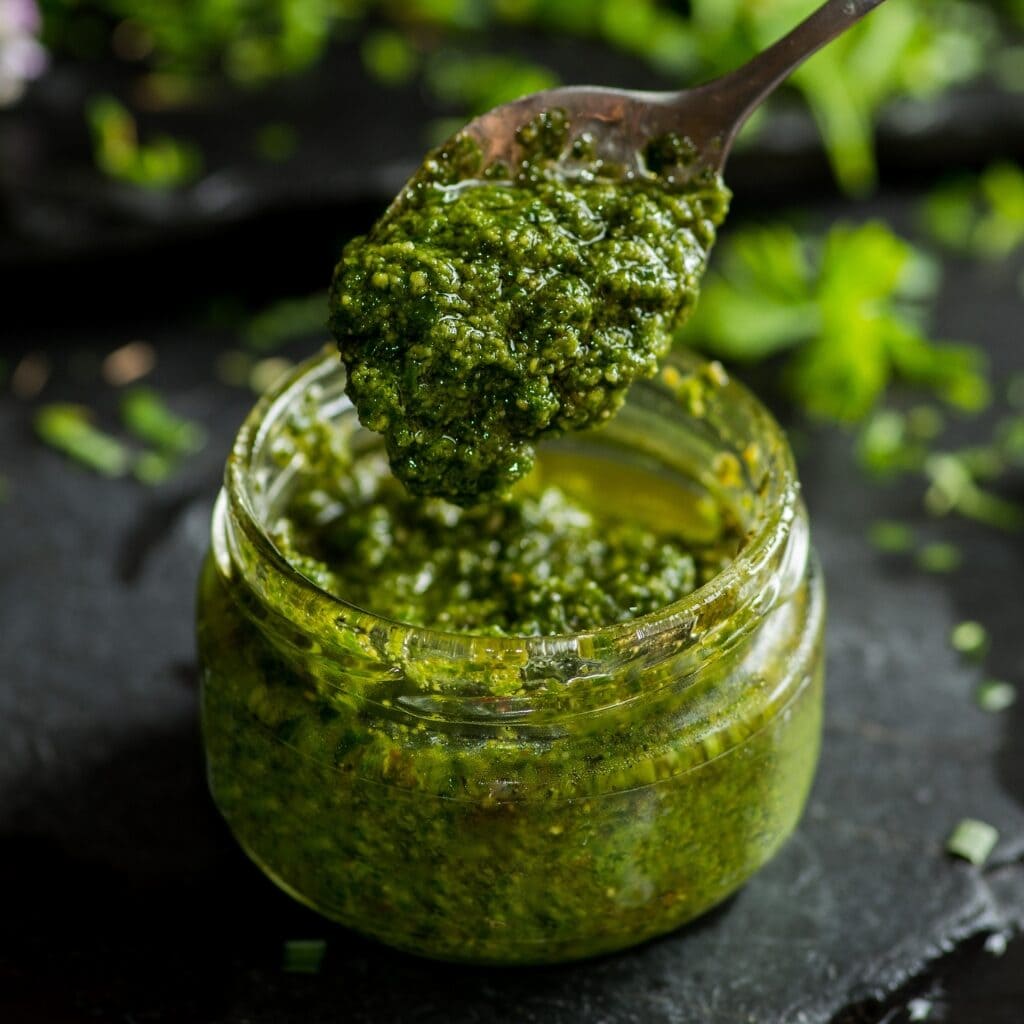
What Is Pesto Made Of?
Pesto is traditionally made with minced garlic, fresh basil, European pine nuts, Parmesan cheese (Parmigiano-Reggiano or Pecorino Sardo), olive oil, coarse salt, and pepper.
Though some recipes swap out the nuts for something cheaper, such as walnuts or cashews.
Vegan versions use nutritional yeast instead of cheese. And many people like to add different herbs to make it more complex.
Either way, the key to making delicious pesto is in the fresh ingredients.
What Does Pesto Taste Like?
Pesto tastes very garlicky with bold, almost spicy notes if it’s fresh.
The pine nuts bring buttery nuttiness, and the cheese adds a salty finish. Meanwhile, the fresh basil is incredibly fragrant and lightens the dish up with a herby punch.
It’s usually quite thick and a little chunky, not smooth.
To put it simply, pesto is a delicious and flavorful sauce that adds a kick of flavor to any dish.
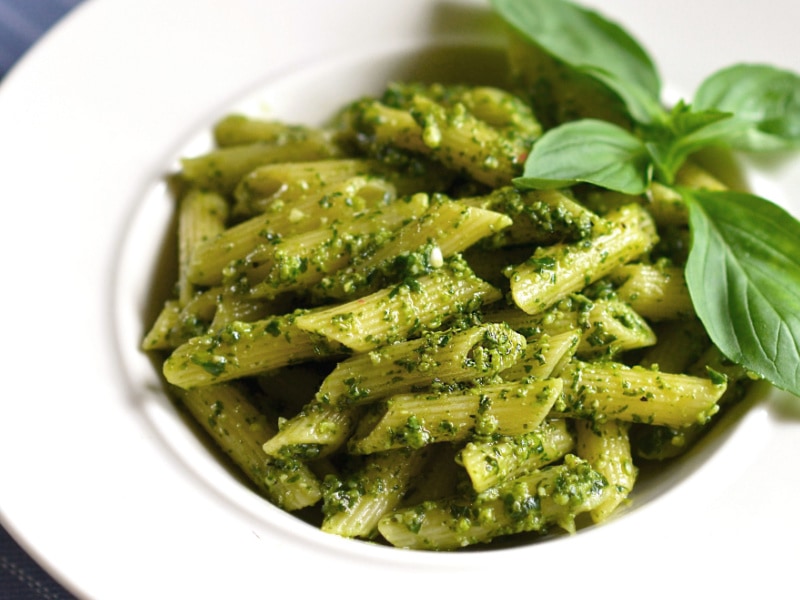
Types of Italian Pesto
I mentioned a few modern twists on pesto above, but here are some classic Italian variations you’ll want to check out.
Pesto Modenese
Pesto Modenese is a traditional Italian sauce that’s been savored for centuries.
It’s a blend of lard, rosemary, and garlic and very thick. Think of it like aioli, but in paste form.
Some recipes also include salami, bacon, sausage, or Parmesan cheese. But even on its own, it’s super flavorful.
Served on warm bread, it’s a great way to start the day.
It’s also typically used as a filling for tigelle, a type of flatbread street food.
Pesto Alla Trapanese
Pesto Alla Trapanese (aka Pesto Rosso) is a Sicilian specialty that’s not to be missed.
This delectable pesto features sun-dried tomatoes, almonds, garlic, Parmesan, and basil blended together for an unforgettable flavor.
It starts with toasted almonds, giving it a different flavor of nuttiness than the pine nut version.
And the tomatoes bring a more acidic and sweet flavor than you’d get with fresh basil.
Some recipes also include red pepper flakes for a touch of heat.
It’s excellent stirred into pasta and such a nice alternative for anyone who doesn’t love overly herby sauces.
Can You Freeze Pesto?
Yes, you can freeze pesto. In fact, freezing is a great way to enjoy it year-round!
If you make it at home, it should be fine in the fridge for a week or two (in an airtight container).
But the best way to store pesto is in ice cube trays. That way, you can grab a portion or two when you need it. Here’s how:
- Spoon the pesto into a clean ice cube tray.
- Level out the top so it doesn’t freeze in a solid block.
- Freeze for a few hours until solid.
- Pop the cubes out of the mold and store them in a freezer-safe bag.
To thaw, take a couple of blocks out of the freezer and leave them in a tub in the fridge overnight.
